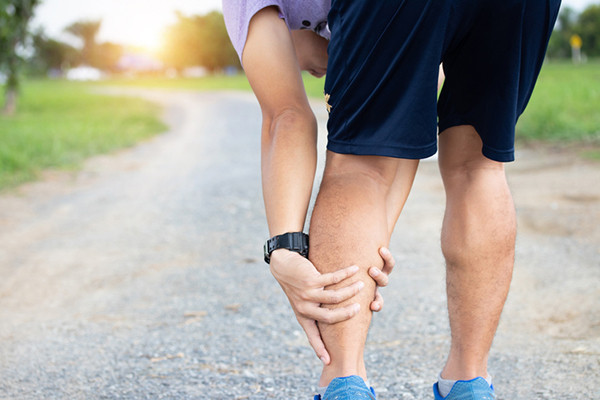Four ways to avoid getting running cramps
Cramps are common amongst runners, but there are ways to avoid them

Picture it: you’re running along without a worry and all of a sudden, your calf or quad muscles start uncontrollably shaking, bulging and cramping. You’re in agony, your legs alternate between wobbling jelly and intense spasms. Your race goal fades away as you limp to the finish.
Almost 40 per cent of recreational and competitive runners experience exercise-associated muscle cramps (EAMC) either during or immediately after exercise, which can leave muscles feeling sore for days.
Muscle cramps are one of the most frustrating reasons for suboptimal performance, but despite their commonality, the cause is still debated and remains the focus of ongoing research.
Causes for cramps
Dehydration
A long-held theory is that dehydration or not enough electrolytes in the blood make the muscles fatigue, which triggers the spasms. Many health professionals state that the body does not store enough water for exercise and athletes do not ingest enough water to replace the amounts they lose during exercise. Some observational studies have found that this is made worse in hot or humid conditions, which leads to fluid and electrolyte depletion and cramping.
Underprepared
Being underprepared for race can lead to all sorts of trouble, including cramping. If you push your body beyond what it’s ready or capable of doing then something is going to give. Cramping is your body’s way of saying to you, “this is too much”. If your muscles and joints aren’t strong enough to handle running at pace for a long period of time, then cramping is a possible. However, some runners still cramp despite training appropriately and loading the muscles.
Golgi Tendon Organ malfunction
A relatively new theory is that cramps are caused by a dysfunction in the receptors – a.k.a the Golgi Tendon Organ (GTO) – in the muscles and tendons. In a normal state, your muscles contract, and relax. When the GTO stops working the circuit gets blocked and the muscle contracts, causing cramping.
How to treat and prevent cramps
Despite a tonne of anecdotal and observational research, we still don’t fully understand where muscle cramps come from. It’s likely that they stem from multiple compounding factors, which make any one treatment or preventative technique unlikely to work for everyone, every time. However, here are a few prevention and treatment approaches runners swear by.
1. Cover off the basics
At its simplest, runners need to try to reduce unnecessary fatigue. Paying attention to your running form, getting your nutrition and hydration right and ensuring your training is appropriate for the race you are competing in are some of the ways you can reduce the chance of cramps ruining your run.
2. Stretching
When cramps happen during a run stopping and stretching or massaging the knotting muscle can help to stop the cramp and provide temporary relief. However research suggests that static stretching at other times doesn’t seem to reduce the likelihood of cramping.
3. Pickle juice
A lot of runners and trainers swear by pickle juice as a way to prevent and treat cramps when they strike. That’s because the liquid left in the pickle jar is incredibly salty and full of electrolytes, which when drunk can replace the sodium and electrolytes lost when you sweat.
A number of studies have confirmed that pickle brine might be more effective than sports drinks at treating muscle cramps. A North Dakota State University study found that athletes who drank the brine noticed the cramps were gone within 85 seconds – about 37 per cent faster than those that drank water and 45 per cent faster than those who didn’t drink anything at all.
But if drinking the cloudy brine from the pickle jar at your local fish ‘n’ chip shop isn’t your style, you can opt for a ready to drink products like Crampfix. Made from natural ingredients including vinegar, salt, sugar, water, lemon, magnesium, potassium and calcium, the formula is said to have just the right blend of astringency, pH and mineral content to provide rapid relief from cramps in under two minutes.
4. Strength and conditioning
A common belief by health practitioners is that performing exercises that strengthen the muscles needed for running can help to prevent or delay the onset of cramping. In order to prevent muscular imbalances and muscle cramping, it’s important to find out where the imbalance is and concentrate your strengthening exercises to focus on those muscles. Try including some Try some leaping, hopping, or skipping drills – otherwise known as plyometrics – as part of your regular training. These exercises can improve muscle-nerve coordination, strength and your fitness.
